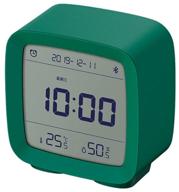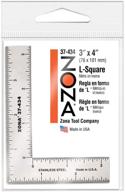
Review on 📊 Longruner Multi-function Tester 1.8 inch Colorful Display Pocketable TFT Backlight Transistor LCR-TC1 - Diode Triode Capacitor Resistor Transistor LCR ESR NPN PNP MOSFET LW21 by Jonathan Clark

Great, but please look at my notes.
- UPDATE AT THE END - This will be a quick review, I'll update as soon as I use it. I have 3 different testers in this style, this one is my favorite. It has about the same accuracy as other devices, but this one has a super nifty zener port and a less useful but interesting IR serial data port. This is the only color/scanning display with a built in lithium ion battery that I have. My others are much simpler, but they have 3-cell managed lithium-ion batteries that I built myself (that's a thing I do, I design and make batteries). ---------------- -----After using the device for a while, I encountered some problems. I was able to fix them all in familiar territory with ease, but other device owners might notice. Some of these questions have to do with personal preferences, standards, and just plain neuroticism. :) After my thorough analysis, I found several positive and negative aspects of the device that go beyond what one usually only sees from the outside, namely: Firstly, the LCD is not indexed. It is located on the LCD display plane bracket with a self-adhesive backing. This caused my LCD to become noticeably crooked and A LOT off-center in a very odd way. I don't know what the trigger was, but because of my design obsession, it really hit the wrong buttons. SOLUTION: Unit was disassembled and LCD module rebuilt using UV curing resin as edge locator. Objectively speaking, it was pretty annoying, no matter whose fault it was. Second, the built-in lithium-polymer battery is quite small (450mAh as labeled, basic and low-mid quality as possible; works, but is generally overpriced and not unremarkable in any way), small enough that one of my Daily Work sessions would kill a matter of about 5 hours. It's also very annoying because the charging connector is in the "5" position of the box where it should be in the head. Easy to fix, replace the plastic bag with a larger one; Since there is almost no space for extras in the case, I opted for an 850 mAh battery with an integrated controller. The exact airframe I used was designed for high-thrust applications, which is good for this box; I lost some efficiency due to the volume of the cell, but the cell is actually underestimated by about 150mAh using nominal potentials. The box now lasts more than twice as long. I'm using an old LiPo for something small that doesn't use a charge at all. Given the price of this device I might have expected a slightly larger and/or better LiPo cell but I think overall it's not bad battery life for the average user or boy/girl just starting out. Electronics. Third, the body really sucks. Period. The injection has a critical withstand voltage at the bottom of the screw holes on the receiving side. This is an issue of both the polymer used, maybe even just the batch, and the design. I had to weld the FDM to a couple of cracks on the inside of the case and didn't move it once, dropped it or otherwise subjected it to the minor stresses expected in adult use conditions. Also, and this is a serious design flaw, contact areas that should have had very little tolerance float in very large numbers. You can't do that with a fragile polymer body, otherwise you risk tearing the whole thing apart during assembly. The whole revelation was really annoying, and the fall of this device, from an engineer and materials scientist's point of view, was something I expected from a device that costs less than $10. Fourth, it's not very important, but sometimes it's a problem with certain types of devices. Almost all the soldered lines were left uncut. This worries me because it's a small risk, or worse, the risk of LiPo breakdown. Some of the wires were actually about 12mm long. Yes. The good news is that this is an easy 5 minute fix for the whole board; cut flush to the panel (only if you have good quality flush cuts that aren't all ruined by trying to cut stainless steel or something equally clueless), flux bond only. If you did everything right, you'll have a barely measurable smooth dome over the lead end and hole in the board. It looks nice, has virtually no crush hazards, seals easily and securely with Conformal Coatings, etc. (e.g. open-top old Casio equipment from the late 80's or early 90's.) Now the functional design of the device actually comes into its own good, and of course the reason for the price category. It's almost entirely non-modular. Only the LCD is separated from the main board, and that probably only for reasons of space (a Z-lift is urgently needed). The host controller is a legitimate Atmel 328p, as are its cousin boards that we see in open testers (devices that typically have an SMD test board plus a turquoise lead clip and a large monochrome green LCD and contain an HVDC switch type, which is powered by the main power supply), but I don't think I've seen a switching power supply, so the input voltages can be very limited (I'm not 100% sure about that, I was more focused on fixing the damn LCD). There is some interesting silkscreen information on the board and there are a good number of additional ports including a 6 pin ISP for writing an Atmel bootloader and an EEPROM. There are several unique hardware features on this board that I haven't seen on other testers of this type. Overall I'm happy with the design of this board. So why romance? These powerful 328p devices tend to be much, much cheaper and definitely top the bill. I just thought everyone should share their experiences. Even though there were some PITA moments with this device, I still like it. Again, I'm someone who lives and breathes electronics and computer/network systems.
- Easy to use
- Some cons
New products
Comments (0)
Top products in 🛠️ Scanners & Testers

Room temperature and humidity sensor Aqara Temperature and Humidity Sensor white

25 Review

Qingping Qingping Bluetooth Smart Alarm Clock Green

22 Review

VIVREAL 4 In 1 Stud Finder Wall Scanner With LCD Display - Center Finding Beam Finder And Sound Warning For Wood, AC Wire, And Metal Studs (Black/Silver)

24 Review

Xiaomi iHealth Meter Thermometer White

24 Review
Another interesting products

📏 Johnson Level and Tool 400EM-S 12-Inch Heavy Duty Metal Combination Square for Professionals, with Inch/Metric Measurements, Silver - 1 Square

8 Review

➕ Stainless Steel L-Square, Size 3-Inch x 4-Inch, Zona 37-434

8 Review

📏 CAMWAY 6 Inch Digital Caliper with LCD Display, Electronic Vernier Caliper, 150mm Stainless Steel Feeler Gauge, Plastic Digital Caliper Set for Zero Setting Inside/Outside Diameter, Depth, and Step Measurement Tool

3 Review

🔲 Johnson RAS-1B Johnny Square: Professional Aluminum Rafter Square, 7'', Silver - Top Quality with 1 Square

8 Review

